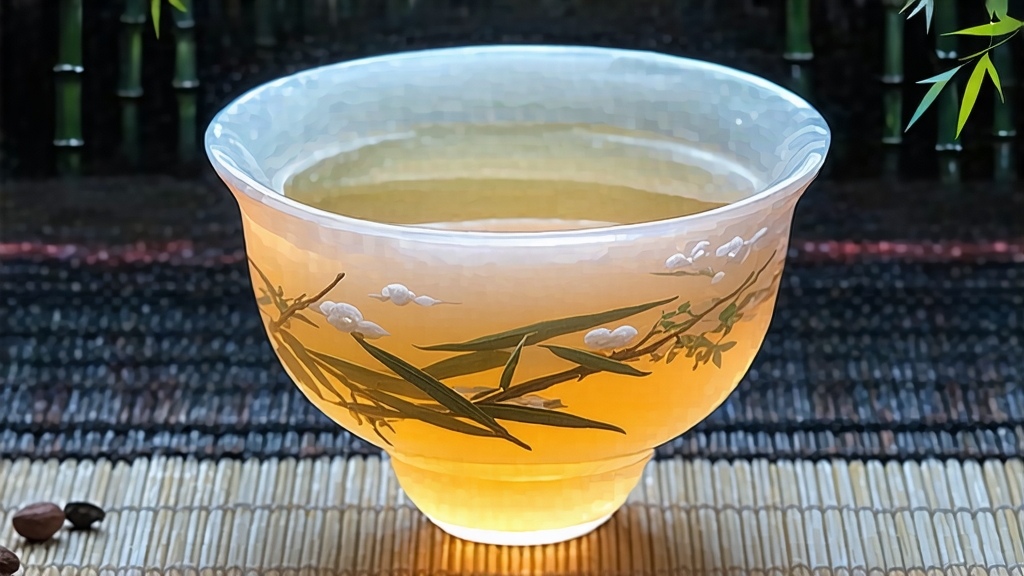
Bai Hao Yin Zhen—“Silver Needle” in the West, “White Hair Silver Tip” in its homeland—occupies the highest tier of China’s white-tea hierarchy. To understand it is to listen to a whispered legend rather than a shouted story: every bud is a freeze-frame of early-spring moonlight, every sip a soft footstep across centuries of tribute culture. International drinkers often meet white tea through bagged blends labeled merely “white”; encountering Yin Zhen for the first time is therefore like hearing a solo violin after background muzak—suddenly the room is all silence and silver.
History: From Imperial Tribute to Global Muse
The written record begins in the Song dynasty (960-1279), when the imperial court in Hangzhou demanded “white buds” as part of its spring tribute. Yet those cakes were not the loose, needle-shaped tea we know today; they were steamed, pressed, and stamped with dragon-phoenix motifs. The modern form emerged during the late Ming and early Qing, when Fujian tea makers abandoned kneading and high-temperature fixing, allowing only air and time to shape the leaf. By 1796, Fuding county annals note that “single-tip silver tea” was already bartered for Persian silver along the Maritime Silk Road. In 1891, a Fuding merchant named Wu Changyi shipped 1.1 dan (about 66 kg) of Yin Zhen to London via Hong Kong; the lot appeared at Mincing Lane auctions as “Flowery Pekoe Silver Tips,” fetching twice the price of top-grade Keemun. The West thus discovered a tea that looked like nothing else—entirely buds, downy white, scent of hay and melon rind—and Chinese connoisseurs doubled down on its mystique, calling it “the scholar who refuses to wear silk.”
Terroir: Two Counties, Two Characters
Authentic Yin Zhen is sourced from only two micro-regions within Fujian province: Fuding and Zhenghe, separated by the Wuyi foothills. Fuding, nearer the East China Sea, enjoys marine humidity and sandy, slightly acidic lateritic soil. Its Da Bai (Big White) cultivar develops thick buds rich in amino acids, yielding a liquor that is creamy, almost coconut-sweet. Zhenghe, higher and more continental, relies on the Xiao Bai (Small White) strain; buds are slimmer, but mountain diurnal swings concentrate aromatic volatiles, giving a colder, quartz-mineral edge. Purists can blind-taste the difference: Fuding coats the tongue like warm rice milk; Zhenghe rings the palate like a wet stone struck by a steel brush.
Plucking: The Dawn of Single-Tip
The harvest window is brutally short—five, at most seven, days in late March when the ambient humidity hovers between 75 % and 80 % and the night temperature refuses to drop below 8 °C. Pickers, almost always women whose fingers are naturally warmer, snap off the unopened bud plus the immediate 1–2 mm stem. A full kilogram of finished tea demands 30 000 buds, roughly one picker’s dawn-to-dusk effort. No second leaf, no insect-bitten tip, no purple variegation is tolerated; the goal is botanical innocence.
Craft: Withering as Meditation
Unlike green tea’s “kill-green” wok roast or oolong’s bruise-and-oxidize ballet, Yin Zhen is coaxed rather than cooked. The buds are laid on bamboo trays stacked like shallow drawers in a sun-warmed pavilion. For 36–48 hours they rest, turned every half hour by palm alone—no metal, no pressure—while mountain breeze carries away grassy aldehydes and encourages a whisper-level oxidation (never above 10 %). On the second night, if the moon is bright and the air cool, trays may be moved outside; locals believe lunar rays “lock the fragrance.” Finally, the tea is baked for minutes, not hours, at 40–45 °C, just enough to drop residual moisture to 5 %. The result: buds the color of antique ivory, each sheathed in microscopic trichomes that shimmer like frost under lamplight.
Chemistry: Why It Tastes Like Liquid Jade
High-grade Yin Zhen contains up to 4.2 % theanine—almost double that of spring gyokuro—delivering brothy um